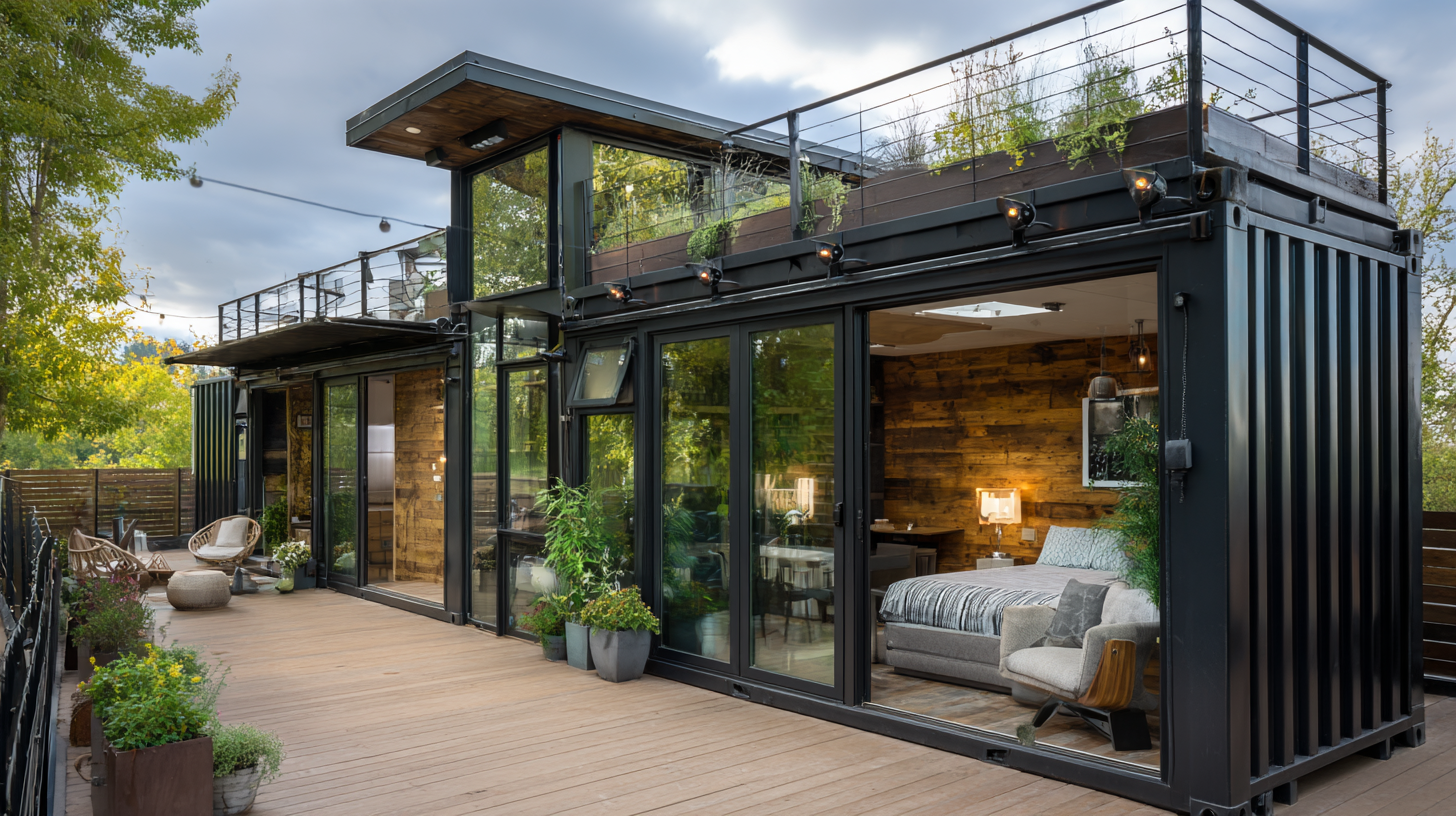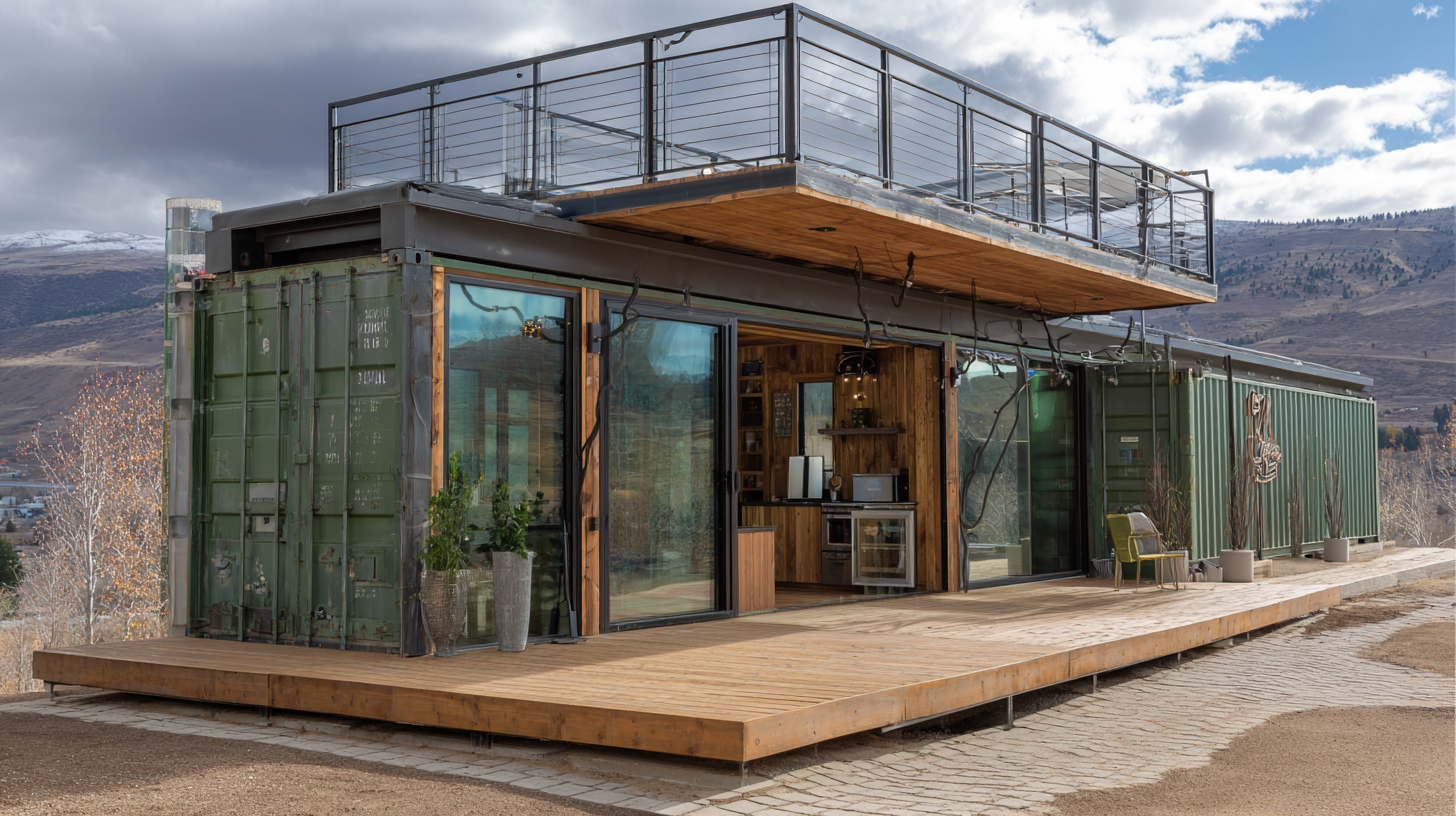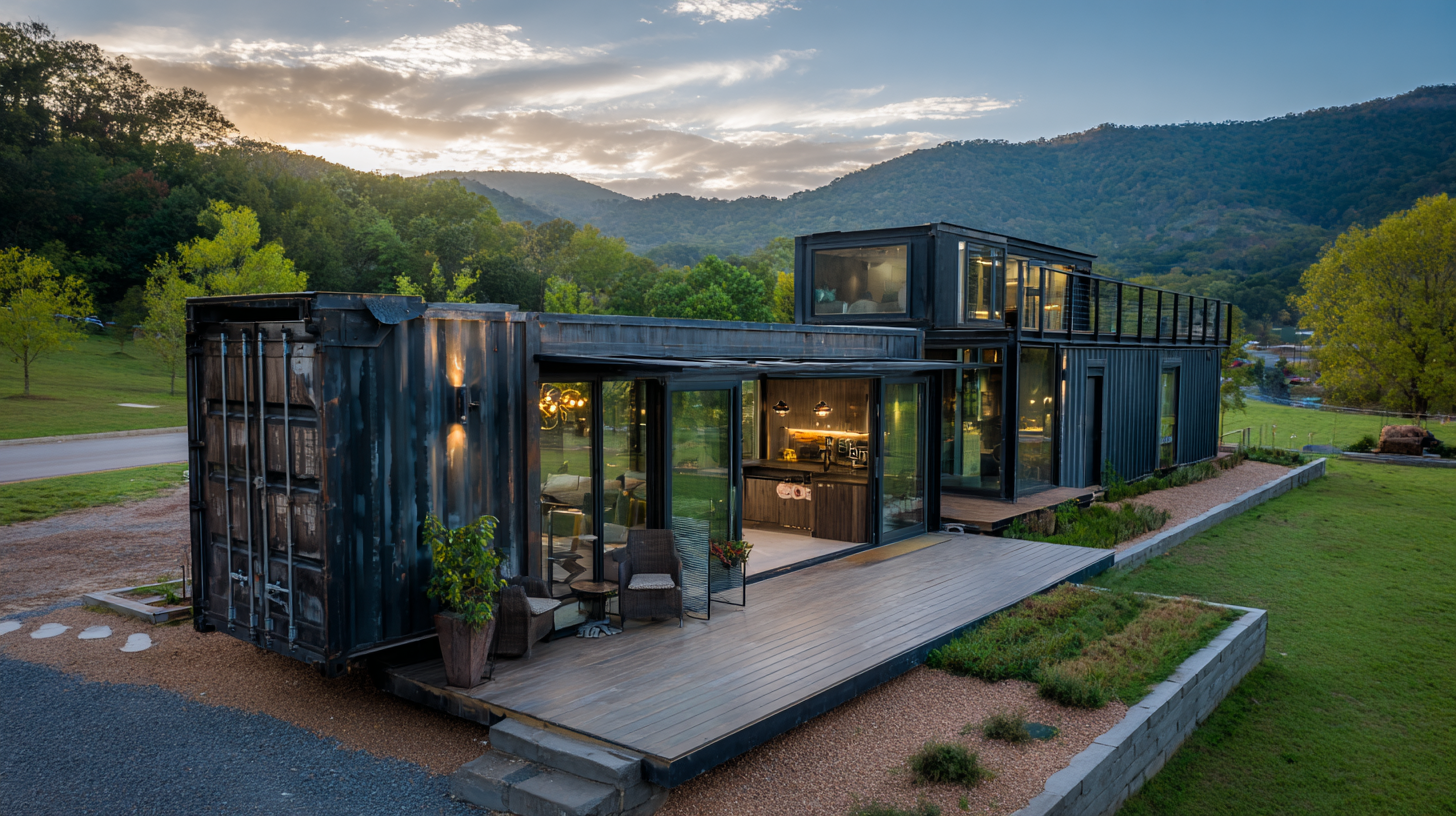As urbanization continues to rise, many individuals are seeking innovative solutions for sustainable living. One such solution is the "Big Container Home", a concept that has gained traction among eco-conscious homeowners. According to Dr. Jane Smith, a leading expert in sustainable architecture, "Big Container Homes not only offer an affordable housing alternative but also minimize our environmental footprint." This innovative approach utilizes repurposed shipping containers to create stylish, functional living spaces that harmonize with the environment.

Big Container Homes represent more than just an architectural trend; they symbolize a shift towards sustainable living that embraces efficiency and creativity. The design flexibility of container homes allows for various configurations and eco-friendly features, such as solar panels and rainwater harvesting systems. By opting for a Big Container Home, residents can significantly reduce waste and energy consumption, thereby contributing to a healthier planet.
In this article, we will explore the benefits of living in a Big Container Home, from financial savings to environmental advantages, providing practical tips for those considering this unique lifestyle. Whether you’re looking to downsize or simply want to adopt a more sustainable way of living, the Big Container Home could be the solution you’ve been searching for.
Container homes have gained popularity as a sustainable living option, primarily due to their exceptional space efficiency. Utilizing repurposed shipping containers, these homes provide a unique opportunity to maximize usable space while minimizing environmental impact. Their modular nature allows for various configurations, enabling residents to create functional living areas tailored to their needs. This adaptability supports diverse lifestyles, whether a compact home for a single person or a larger space for a family.

When considering a container home, optimizing space is key. Tip: Use multifunctional furniture that serves multiple purposes, such as a sofa bed or a dining table with built-in storage. This approach not only saves space but also enhances the overall aesthetic. Additionally, open floor plans can create a sense of spaciousness, making smaller areas feel larger and more inviting.
Another significant advantage of container homes is their energy efficiency. With proper insulation and the ability to incorporate sustainable technologies, such as solar panels, these homes can drastically reduce utility bills. Tip: Consider installing large windows to maximize natural light, which can reduce the need for artificial lighting and create a warm, welcoming atmosphere. Embracing the benefits of space efficiency in container homes ultimately contributes to a more sustainable and enjoyable living experience.
Container homes have emerged as a popular alternative for sustainable living, particularly due to their use of eco-friendly materials. When constructing these unique homes, recycled steel shipping containers form the core structure. These containers are durable and weather-resistant, reducing the need for additional materials that often contribute to environmental degradation. Additionally, using locally sourced materials for insulation and finishing will minimize the carbon footprint associated with transportation.
Tip: To enhance sustainability, consider incorporating reclaimed wood or bamboo for flooring and cabinetry. Both materials are renewable and offer a unique aesthetic to your home.
Furthermore, the design options for container homes allow for innovative use of space and energy efficiency. Features like green roofs and solar panels can significantly reduce energy consumption, while rainwater harvesting systems promote water conservation. These eco-conscious choices not only support a sustainable lifestyle but also help reduce utility costs in the long run.
Tip: When designing your container home, prioritize passive solar design principles, such as proper orientation and window placement, to maximize natural light and reduce heating needs.
The cost-effectiveness of container homes compared to traditional housing is a compelling argument for sustainable living. Container homes are constructed from repurposed shipping containers, which significantly reduces material costs compared to conventional building materials. With a lower initial investment, individuals can allocate their finances toward other sustainable features, such as solar panels and rainwater harvesting systems, enhancing the eco-friendliness of their living space.
Additionally, container homes often have lower construction times due to their modular nature, leading to reduced labor costs. The structural integrity of shipping containers means less need for extensive foundational work, further driving down costs. Furthermore, these homes typically require less energy for heating and cooling due to their compact size and insulation capabilities, leading to long-term savings on utility bills. As awareness of environmental issues grows, opting for container homes not only provides financial benefits but also aligns with a lifestyle that prioritizes sustainability.
| Aspect | Container Home | Traditional Housing |
|---|---|---|
| Initial Cost | $10,000 - $50,000 | $200,000 - $500,000 |
| Construction Time | 1 - 3 months | 6 - 12 months |
| Energy Efficiency | High | Moderate |
| Maintenance Cost (Annual) | $500 - $1,000 | $2,000 - $4,000 |
| Resale Value | $20,000 - $80,000 | $250,000 - $600,000 |
| Environmental Impact | Low | Moderate |
Container homes are rapidly gaining popularity in the realm of sustainable living, particularly due to their flexibility and customization options. According to a report by the Container Housing Association, homes made from shipping containers can be designed to meet diverse aesthetic preferences and functional requirements, allowing homeowners to tailor their spaces to their unique lifestyles. With modular designs, it is possible to combine multiple containers to create spacious and efficient living areas that can be adapted as needs change over time.
Moreover, container homes are often built with environmentally friendly materials and techniques, further enhancing their appeal for sustainable living. A survey by the International Living Future Institute reveals that 75% of homeowners prioritize sustainability features when designing their living spaces. This commitment to sustainability is complemented by the ability to include energy-efficient appliances, solar panels, and rainwater harvesting systems in the design process. As a result, container homes not only provide flexibility in layout but also contribute to a reduced carbon footprint, making them an attractive option for environmentally conscious individuals looking to create their ideal living environment.
Living in a big container home significantly contributes to reducing one’s environmental impact, primarily through a smaller carbon footprint. Traditional homes often require extensive resources for construction, generating a considerable amount of waste and emissions. In contrast, container homes repurpose existing shipping containers, which not only utilizes materials that would otherwise contribute to landfill but also reduces the need for new building materials. This recycling process is an essential step toward sustainable living, as it taps into the Circular Economy principles.
Additionally, container homes can be designed with energy-efficient features that further minimize environmental harm. Incorporating solar panels, energy-efficient windows, and high-quality insulation can dramatically reduce energy consumption. By using renewable energy sources and optimizing resource use, residents can lower their reliance on fossil fuels, leading to a more sustainable lifestyle. Furthermore, the compact design often requires less energy for heating and cooling, showcasing that smaller living spaces can lead to a more responsible environmental footprint. Embracing container living not only highlights innovative housing solutions but also fosters a commitment to a greener future.

